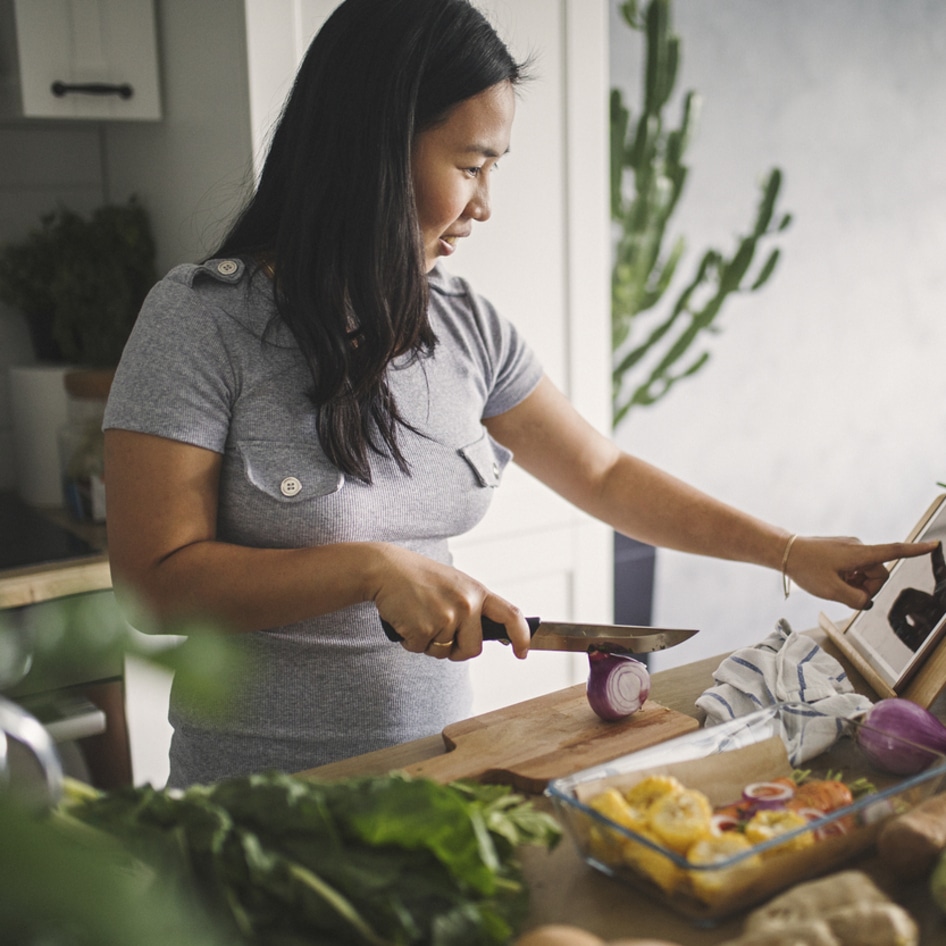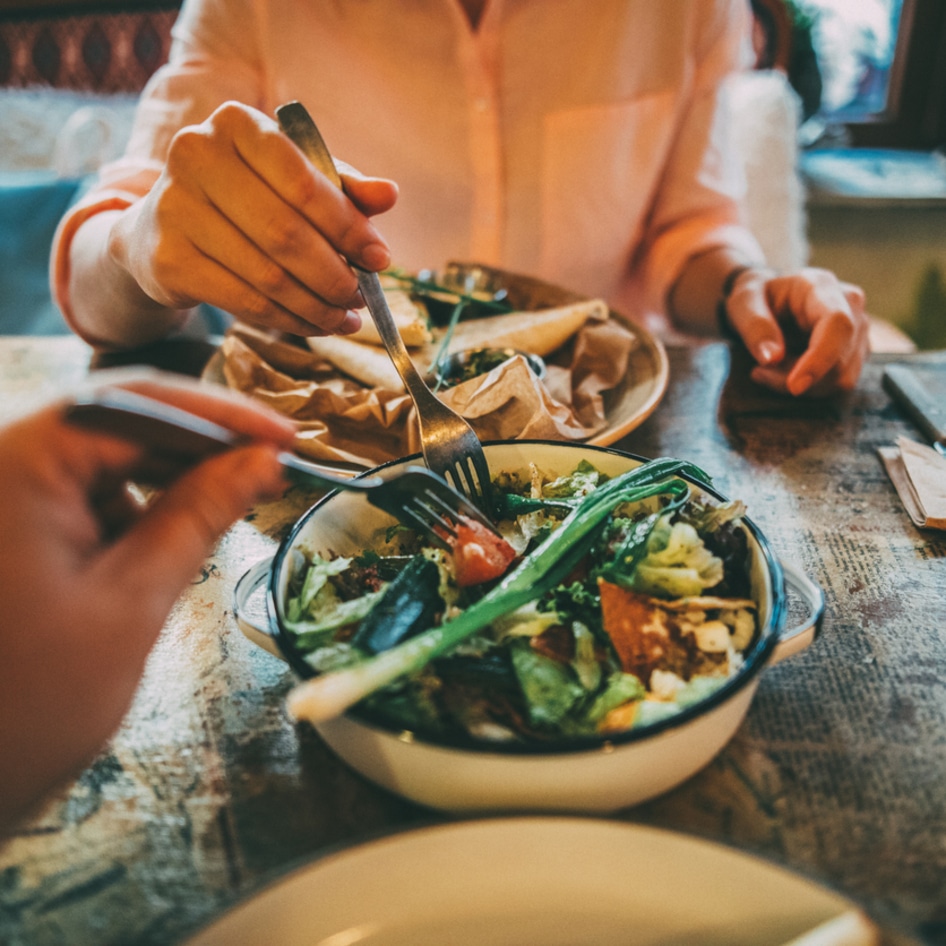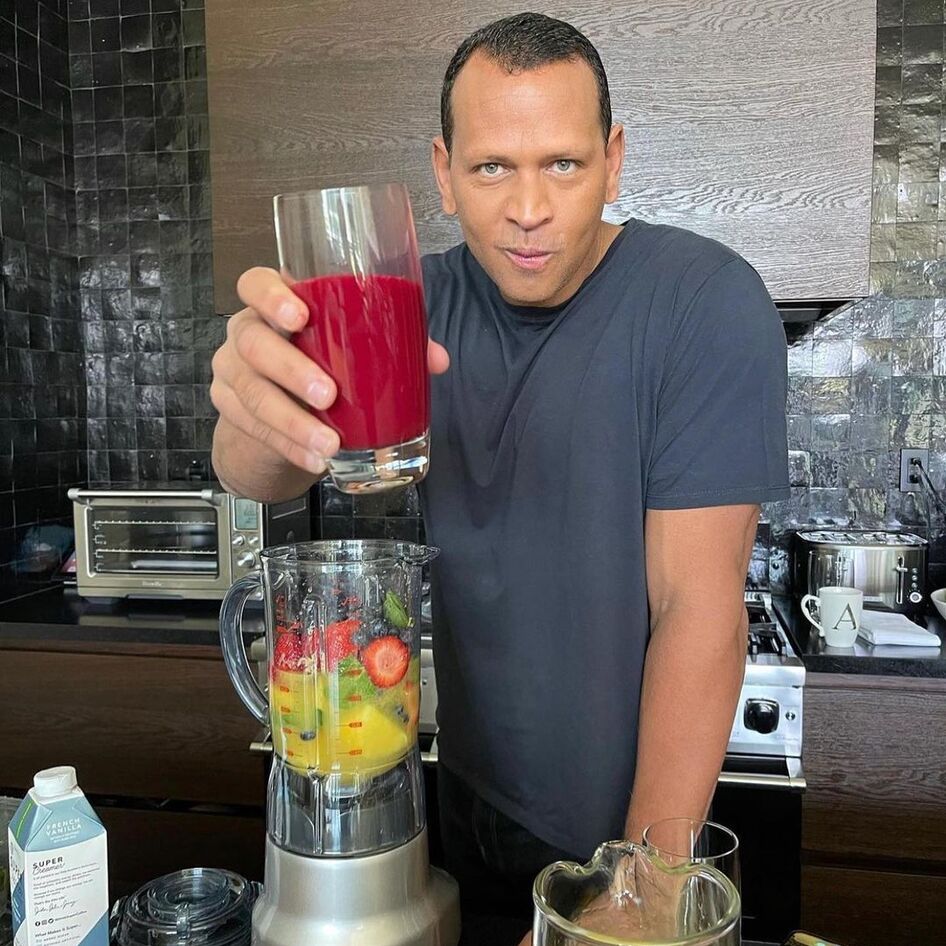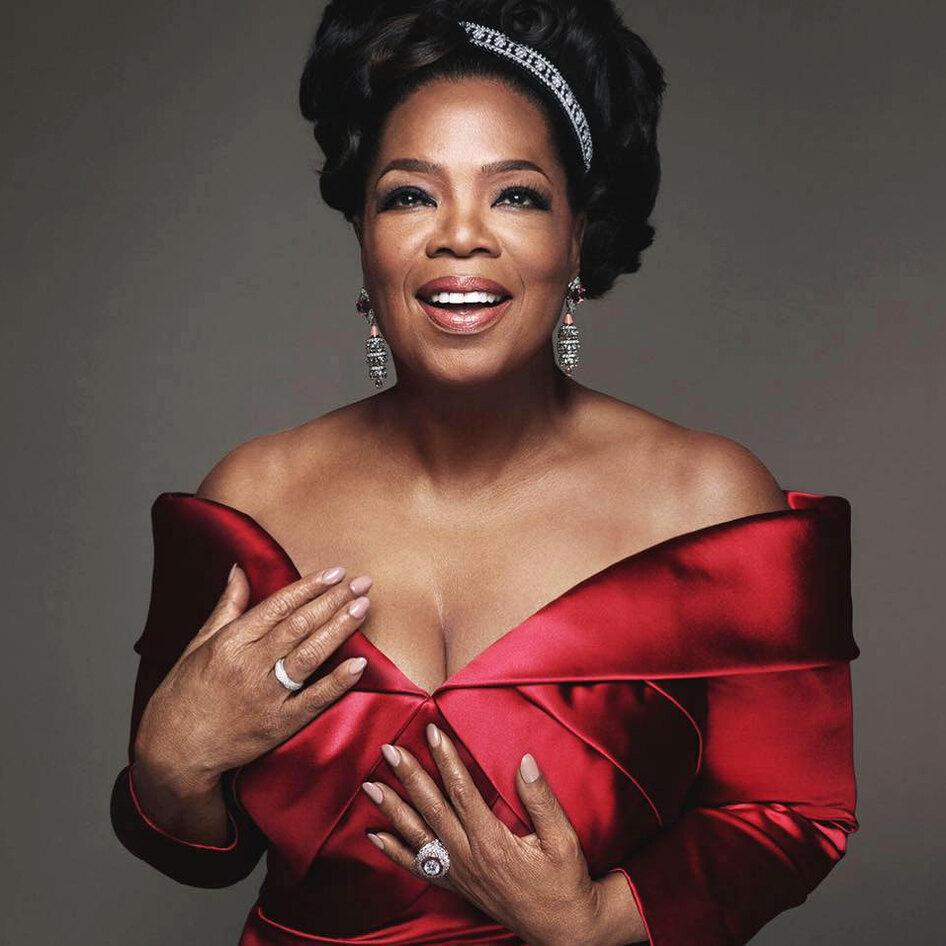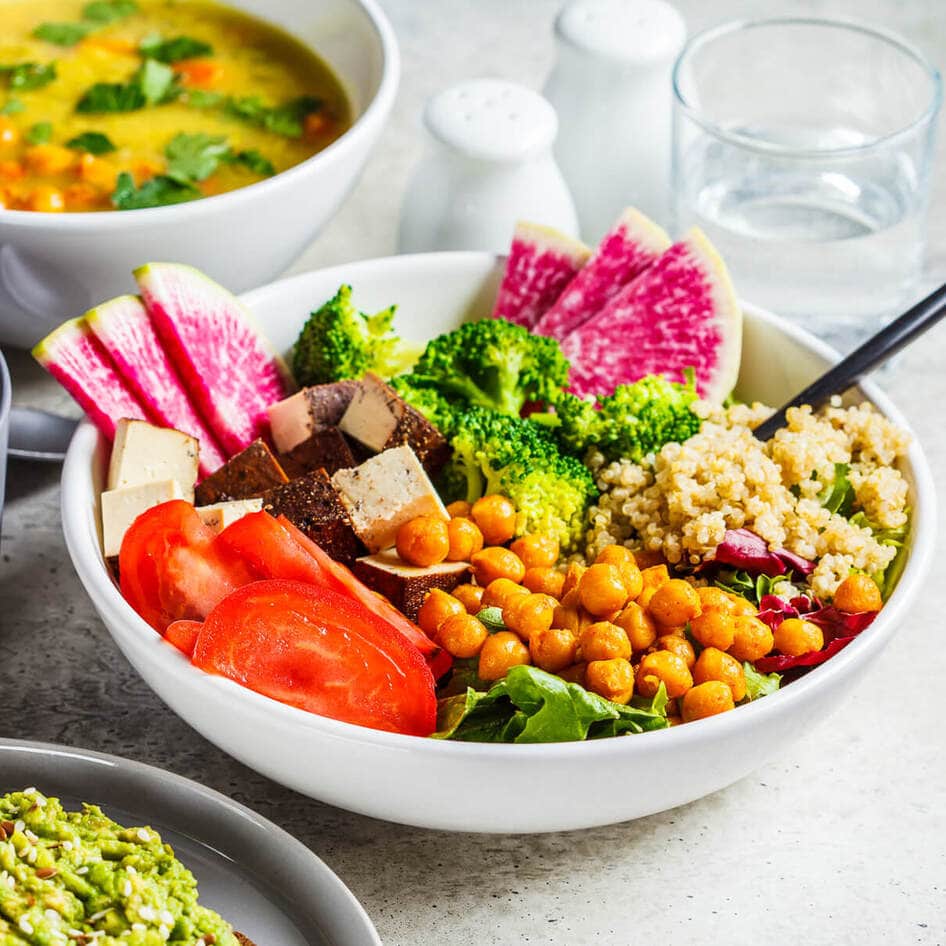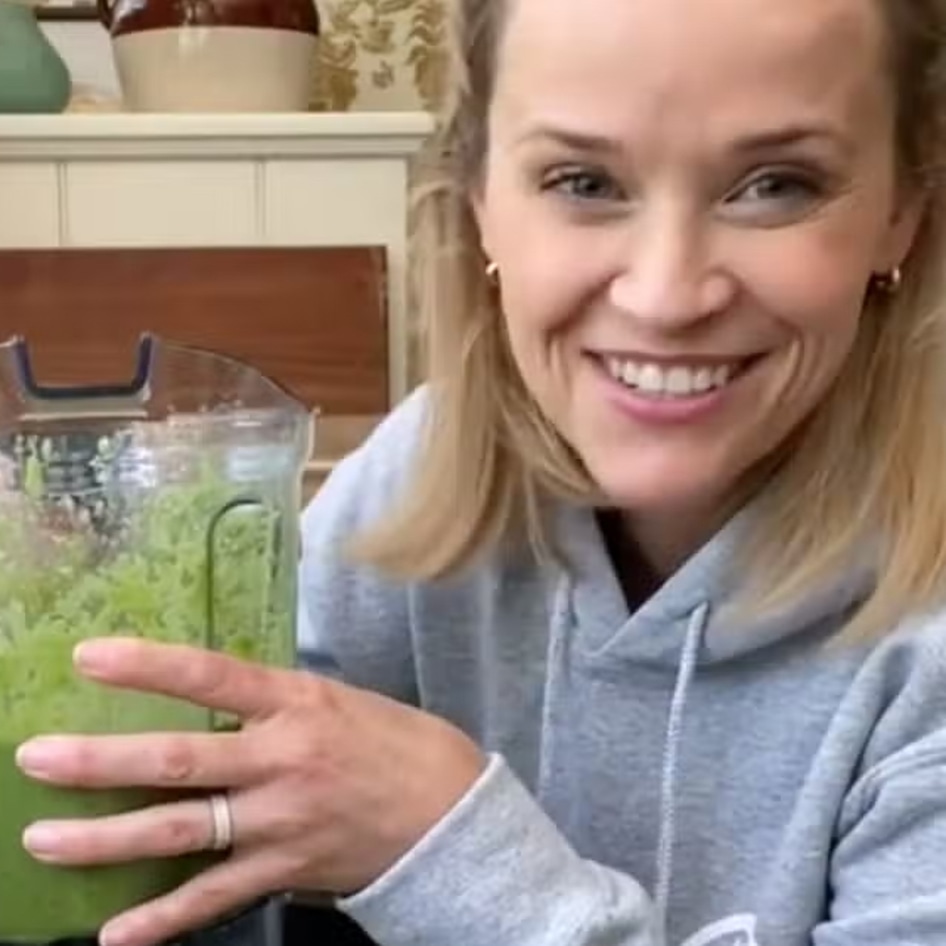Colleen Holland: How I Became a Healthy Vegan
Seduced by the amazing array of vegan junk food available today, VegNews’ Colleen Holland shares her personal transformation to becoming a healthy vegan.
December 30, 2013
I am just going to say it: vegans have a dirty little secret. To the outside world, we eat nothing but sprouts, hummus, and brown rice, but us seasoned herbivores know the truth. You know what I’m talking about—maple-glazed doughnuts, cookies ‘n’ cream milkshakes, mile-high peanut butter cakes, Doritos-style chips, caramel candy bars, and the list goes on. In 2013, there is a vegan version of nearly every dessert or snack on the market, and we can’t get enough. Heck, I didn’t even eat most of this stuff before I went vegan, but put a chocolate peanut butter cup or marshmallow moon pie in front of me now, and suddenly the world comes to a halt. Why? Because it’s vegan.
There’s nothing wrong with dairy-free cakes, cookies, and candy—these foods have helped portray veganism as accessible, mainstream, and delicious. In marketing our message, it’s vital to show that there’s no deprivation when ditching the meat and dairy (I believe this wholeheartedly). But does this mean every day can be Thanksgiving just because we’re vegan? The answer is a resounding no, especially as we get older and wiser.
Eighteen years ago, when I first took the vegan plunge, my options were limited. My new diet consisted of salads, whole grains, soups, stir-fries, curries, and smoothies—and I felt incredible. Ironically, my core diet hasn’t changed that much over the years (I enjoy eating healthfully), but, over time and as the availability of vegan junk food increased, it slowly crept into my life. Soon, a mid-morning snack might consist of a vegan cookie, lunch could be a meatball sub smothered in marinara and vegan cheese (because it’s vegan!), and something chocolate in the afternoon was more and more welcome. By dinnertime, I often wasn’t hungry but would eat a large (healthy) meal just to feel nourished. I like high-quality food, I don’t believe in deprivation or dieting, and I generally felt great, but I carried around an additional 15 pounds for the last decade. I was fine with this since, essentially, I could eat whatever I wanted.
But last summer, everything changed. I accepted a writing assignment along with four VegNews editors to test out popular vegan cleanses for our January+February 2013 issue. On day one of my 21-day raw-food regime, I was irritated—I don’t want to be told what to eat, and I don’t like to deprive myself. But as day after day went by eating nothing but whole foods (and, in my case, uncooked whole foods), I felt my body changing. I felt lighter, clearer, and, frankly, more confident. The extra weight came off quickly, and I found I needed an hour less sleep each night to achieve the same level of productivity. Most importantly, for me, I no longer craved a daily sugar hit and have found that to reduce your dependency on something, you have to get it out of your life. In just 21 days, I had become a healthy vegan.
Nearly a year later, I have sustained many of the habits I learned during those three weeks. I eat mostly unprocessed foods (fresh and cooked), keep added oils to a minimum, limit my portion sizes, and try my best to keep sugar out of my diet. Do I splurge a few times a week on gourmet vegan cuisine and adult libations? Absolutely. But I balance it all out by eating mindfully and healthfully the rest of the time. Here’s what I’ve learned along the way:
Cut the crap.
Today, there seem to be two camps in veganism: the healthy vegans and the junk-food vegans. I love them both, but let’s be honest: vegan cupcakes and coconut ice cream are not food. Study after study shows that we should be eating mostly unprocessed, whole foods for optimal health, and after years of reporting these findings in VegNews, I finally had to admit to myself that these studies were true. An oversized burrito with refried beans, plantains, guacamole, and chips has become a bowl of smoky black bean soup with broccoli for lunch, while that plate of pesto gnocchi at dinner has been replaced with a kale salad and sweet potato. Campbell, Esselstyn, McDougall, and Fuhrman: you were right all along.
Limit your indulgences.
As a die-hard foodie, giving up luscious, rich foods just isn’t going to happen. After all, it’s my duty as a magazine publisher to report on the latest restaurants and new products for my food-obsessed audience. But by developing a healthy foundation of unprocessed foods most of the time, indulging a few times a week in appropriate portions becomes no big deal. Limiting these indulgences is not always easy, but every day is a new opportunity to find that balance.
Stop treating every day like it’s Thanksgiving.
For years, I balked at the diet industry’s condescending crusade for “portion control”—we’re all adults, can’t we eat what and how much we want? Of course we can, but I have to say managing my portions has made a big difference in the way my body feels (gone are the post-meal slumps after eating too much—a habit I justified since I don’t eat animal products). Years ago, I lived in Japan and was fascinated by the Japanese ability to manage portion sizes and stay trim. There is a saying there that says we should only eat until we’re 80-percent full for optimal health, a way of eating that has been engrained into that culture. I now strive to achieve this, and not treat every meal like it’s Tofurky Day.
The less you have, the less you crave.
The biggest achievement for me in becoming a healthy vegan has been to get the sugar (mostly) out of my life. I have a huge sweet tooth, and sugar had become a daily ritual in the form of whatever delicious treat arrived to the VegNews office that day. But because what I ate was always vegan, what was the problem? By eliminating the daily hit, my cravings have diminished drastically, and being well aware of the dangers of sugar, I know my health has benefited greatly. Whenever possible, I now get my fix with chilled oranges and almonds instead of cookies and chocolate.
The French rule.
After spending a summer in France, and having more than my fair share of pain au chocolat, croissant aux amandes, and éclairs, I discovered their stay-trim secret. They don’t deprive themselves (but don’t waste calories on processed foods or snacks), yet they don’t overeat and savor just a few bites of those heavenly French pastries. Since trying to be a healthier vegan, I’ve adopted this practice whenever I really want to indulge in a rich dessert—and have found that three forkfuls of that double-chocolate torte with coconut whipped cream can be incredibly satisfying, and all I really need.
Treat health as a holistic practice.
Good food and eating habits is paramount to good health, but health goes way beyond the plate. Being our best selves—physically, emotionally, and spiritually—is also about taking care of our minds, our relationships with others, and our environments. It means managing stress and expectations, getting enough sleep, exercising, deepening social connections (and ditching toxic ones), practicing unconditional love, and experiencing joy in everyday moments. I think about this constantly in my path to be the best person I can possibly be in every part of my life.
To some, this insight may seem like the same jargon we’ve been hearing from mainstream media for years. But it’s my belief that something changes when we become immersed in vegan culture. Sugar, fat, and processed foods suddenly become acceptable—and celebrated—as long as they’re vegan. It is my goal to be a glowing ambassador of the veg lifestyle, and becoming a healthier vegan (however one defines it) has helped me achieve this.
Learn more about VegNews’ co-founder Colleen’s journey to becoming a healthy vegan by following her on Facebook!
JUMP TO ... Latest News | Recipes | Guides | Health | Shop

